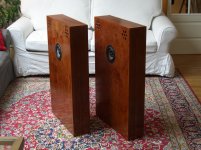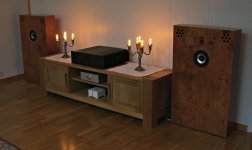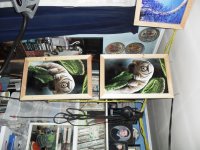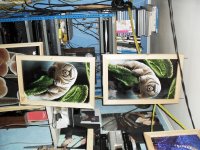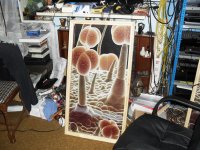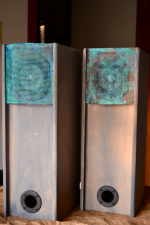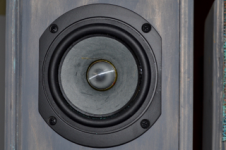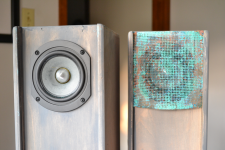Well Carl, in my defence this is after all a "photo gallery" thread which generally implies photo's only in my experience.
Thanks for share. Nice woodwork in your flickr page.
I sense a problem
With the model illustrated I think I sense a problem, it is spelled w-i-f-e!
I'll start... This is my 3rd pair of "T-Horns"; too bad I couldn't keep them, because I sold it...
With the model illustrated I think I sense a problem, it is spelled w-i-f-e!
Well folks here is my 1990's 3Kw RMS PA rig stacked over 7ft tall, all sealed, very fast and very loud at the bottom end, flapped your jeans legs 🙂 All Fane Colossus drivers with cast aluminum chassis irreplaceable and lost 🙁
Sorry for the photo quality, all that survives!
I should add in the spirit of this forum, all hand built including the massive class A/B amps to my own design including electronic crossovers, no power limiters on the bottom end at all, the power supplies output stages and multiple 18" colossie just got on with whatever hit them, never blew up but shook some windows out hahaha
Another silly bit of info, I actually got a tour of the factory in Batley Yorkshire when I bought the drivers, amazing place and they did know what they were doing then 🙂 not a sniff of China anywhere near the place lols!
Sorry for the photo quality, all that survives!
I should add in the spirit of this forum, all hand built including the massive class A/B amps to my own design including electronic crossovers, no power limiters on the bottom end at all, the power supplies output stages and multiple 18" colossie just got on with whatever hit them, never blew up but shook some windows out hahaha
Another silly bit of info, I actually got a tour of the factory in Batley Yorkshire when I bought the drivers, amazing place and they did know what they were doing then 🙂 not a sniff of China anywhere near the place lols!
Attachments
Last edited:
Jordan Eikona 2 in Transmission line.
First, thanks to several people in this forum who helped me and gave great advice in my full range endeavours. Scottmoose, GM and Planet10 in particular. Being pointed in the direction of contemporary transmission line theory has been very useful.
I completed a pair of speakers based on the Jordan Eikona 2 this weekend. Already had a few friends over for a demo. We’ve been listening to some Eva Cassidy, Mark Knopfler, Bjørn Eidsvåg (Norwegian artist), and numerous others.
I am very impressed by this driver! The speakers fully vanish and throw a large and beautiful soundstage. On one track we actually had the discussion of whether there is too much bass. We came to the conclusion that, indeed, there is a lot of bass, but as long it is of this quality, it is perfectly ok.
Some facts:
21 mm Scandinavian birch ply, furniture grade (BB)
The cabinet is 14.7 cm deep, giving an internal depth of only 10.5 cm.
Height/width adheres to the golden ratio (approx 55 cm wide)
I used Leonardo Audio transmission line simulator.
Design goal: reproduce all the notes of an upright double bass (I like Jazz)
According to simulation -3 db is at 35 Hz. Sounds about right in my listening room. One of my colleagues love to measure things and will drop by later in the week for an in-room measurement.
One layer of stain, three layers of varnish (and about 10 hours of sanding)
The transmission line is actually divided in two. The two lines run in parallel down the center of the cabinet, and then they fold each way and run up along the edges of the cabinet. The two sets of seven holes you can see in the photos is the exit for the two lines. The speakers have identical holes on the back as well.
I used openScad software to design all the parts based on simulation results. OpenScad is a free software for 2D and 3D design. The resulting .dfx files was sent to a local woodshop that routed all the parts for me.
Powered by a first watt diy F6.
Sound great.
Looks gorgeous :-D
First, thanks to several people in this forum who helped me and gave great advice in my full range endeavours. Scottmoose, GM and Planet10 in particular. Being pointed in the direction of contemporary transmission line theory has been very useful.
I completed a pair of speakers based on the Jordan Eikona 2 this weekend. Already had a few friends over for a demo. We’ve been listening to some Eva Cassidy, Mark Knopfler, Bjørn Eidsvåg (Norwegian artist), and numerous others.
I am very impressed by this driver! The speakers fully vanish and throw a large and beautiful soundstage. On one track we actually had the discussion of whether there is too much bass. We came to the conclusion that, indeed, there is a lot of bass, but as long it is of this quality, it is perfectly ok.
Some facts:
21 mm Scandinavian birch ply, furniture grade (BB)
The cabinet is 14.7 cm deep, giving an internal depth of only 10.5 cm.
Height/width adheres to the golden ratio (approx 55 cm wide)
I used Leonardo Audio transmission line simulator.
Design goal: reproduce all the notes of an upright double bass (I like Jazz)
According to simulation -3 db is at 35 Hz. Sounds about right in my listening room. One of my colleagues love to measure things and will drop by later in the week for an in-room measurement.
One layer of stain, three layers of varnish (and about 10 hours of sanding)
The transmission line is actually divided in two. The two lines run in parallel down the center of the cabinet, and then they fold each way and run up along the edges of the cabinet. The two sets of seven holes you can see in the photos is the exit for the two lines. The speakers have identical holes on the back as well.
I used openScad software to design all the parts based on simulation results. OpenScad is a free software for 2D and 3D design. The resulting .dfx files was sent to a local woodshop that routed all the parts for me.
Powered by a first watt diy F6.
Sound great.
Looks gorgeous :-D
Attachments
Another silly bit of info, I actually got a tour of the factory in Batley Yorkshire when I bought the drivers, amazing place and they did know what they were doing then 🙂 not a sniff of China anywhere near the place lols!
Yeah, those were the days! A tour of Altec in the '60s proved they made almost everything in-house but the wood products, be it cast, stamped, molded/whatever.
GM
First, thanks to several people in this forum who helped me and gave great advice in my full range endeavours. Scottmoose, GM and Planet10 in particular.
Design goal: reproduce all the notes of an upright double bass (I like Jazz)
According to simulation -3 db is at 35 Hz.
OpenScad is a free software for 2D and 3D design.
Looks gorgeous :-D
You're welcome!
Me too; some of Ray Brown's, Christian McBride's upright recordings along with Brian Bromberg's electric bass are part of my essential audition music. Ditto Takashi Ohi's vibes to voice the rest of the BW. His 'Time Stream' album as well as some of and Milt Jackson's solo albums will brutally highlight any tonal imbalance, damping issues, especially metal horns and/or diaphragms.
Good to know, thanks for the info!
That's an understatement! 😉
GM
First, thanks to several people in this forum who helped me and gave great advice in my full range endeavours. Scottmoose, GM and Planet10 in particular. Being pointed in the direction of contemporary transmission line theory has been very useful.
I completed a pair of speakers based on the Jordan Eikona 2 this weekend. Already had a few friends over for a demo. We’ve been listening to some Eva Cassidy, Mark Knopfler, Bjørn Eidsvåg (Norwegian artist), and numerous others.
I am very impressed by this driver! The speakers fully vanish and throw a large and beautiful soundstage. On one track we actually had the discussion of whether there is too much bass. We came to the conclusion that, indeed, there is a lot of bass, but as long it is of this quality, it is perfectly ok.
Some facts:
21 mm Scandinavian birch ply, furniture grade (BB)
The cabinet is 14.7 cm deep, giving an internal depth of only 10.5 cm.
Height/width adheres to the golden ratio (approx 55 cm wide)
I used Leonardo Audio transmission line simulator.
Design goal: reproduce all the notes of an upright double bass (I like Jazz)
According to simulation -3 db is at 35 Hz. Sounds about right in my listening room. One of my colleagues love to measure things and will drop by later in the week for an in-room measurement.
One layer of stain, three layers of varnish (and about 10 hours of sanding)
The transmission line is actually divided in two. The two lines run in parallel down the center of the cabinet, and then they fold each way and run up along the edges of the cabinet. The two sets of seven holes you can see in the photos is the exit for the two lines. The speakers have identical holes on the back as well.
I used openScad software to design all the parts based on simulation results. OpenScad is a free software for 2D and 3D design. The resulting .dfx files was sent to a local woodshop that routed all the parts for me.
Powered by a first watt diy F6.
Sound great.
Looks gorgeous :-D
They look really nice!!!
can you share the drawing?
I might want to try this myself!
thanks
They look really nice!!!
can you share the drawing?
I might want to try this myself!
thanks
Thanks for the nice words from everyone 🙂
Sure, just need to tidy them up so they can be understood by other people than me 🙂
I'll share figures and .dxf files that can be sent directly to a router.
Love the Tardigrades. 🙂The big one using ferrites and the 2 others using neos and my little monsters!
Like the enclosures very much, not crazy about the grills. IMO, even for industrial look they seem unfinished. Maybe a frame made of 1/4". copper ACR or instrumentation tubing.
Maybe a frame made of 1/4". copper ACR or instrumentation tubing.
Guangui, Thanks for the input. I thought about metal frames too, but I am limited in the tools I have to properly finish them. I may try to place the copper on a thin, flat wood ring and then mount those with copper tubing as spacers off of the driver. With the wood ring painted the same as the cabinet, that might give a more finished look.
Sounds like a plan to me! Instead of one ring you could sandwhich the grill between two rings and use brass rivets to hold together; a rivet tool is not expensive. Then use tubing as spacers, like you mention.
Markaudio Alpair 10P tower enclosure
Hi,
It's been a while since i've finished my own full range tower, and I forgot to post it here. Here's my own version of the Markaudio Alpair 10P enclosure. I'm really enjoying it.
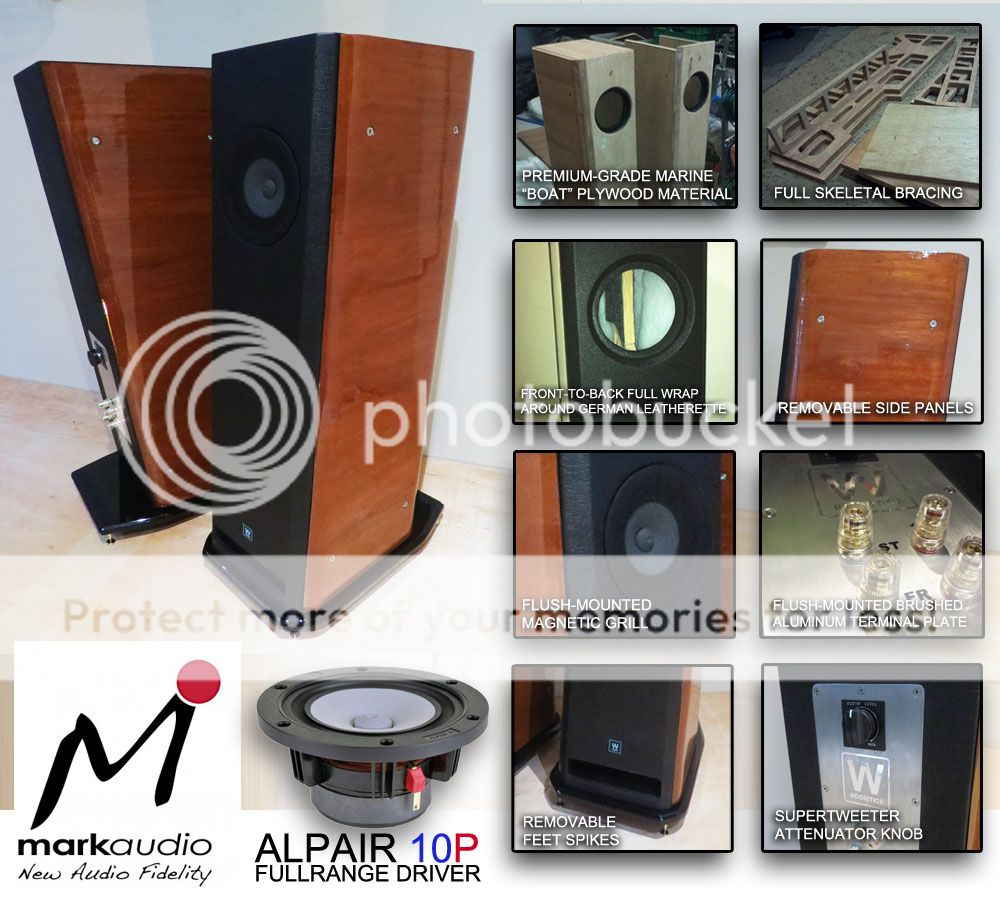
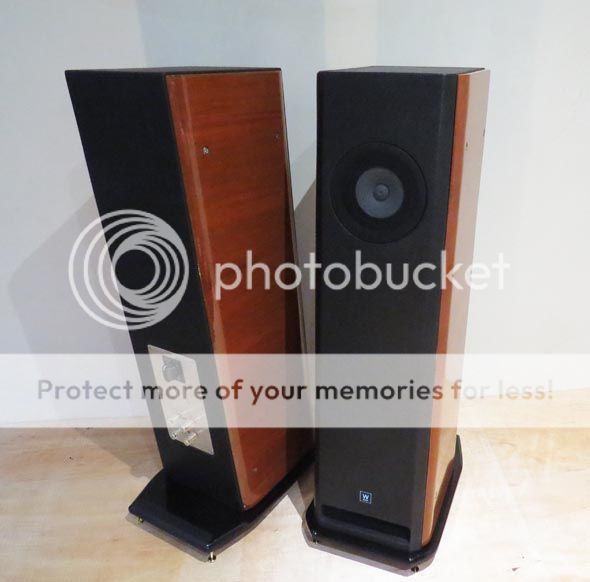
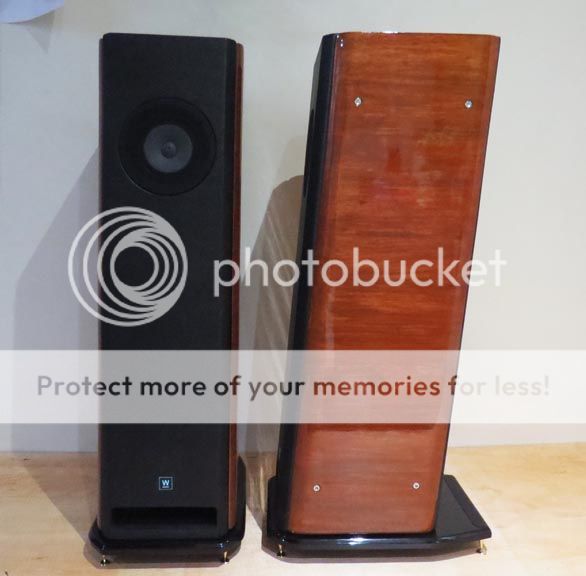
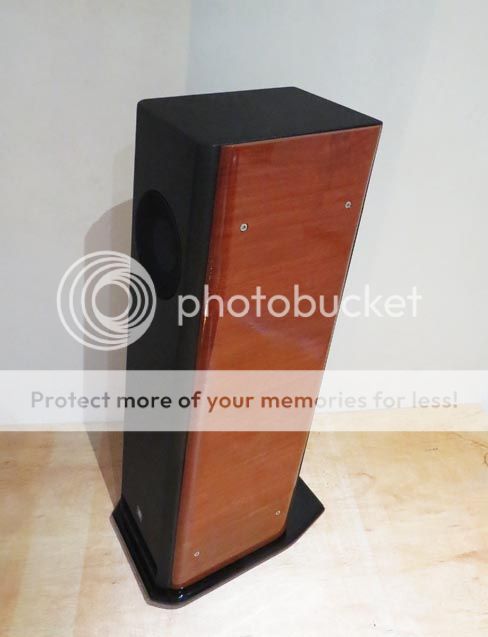
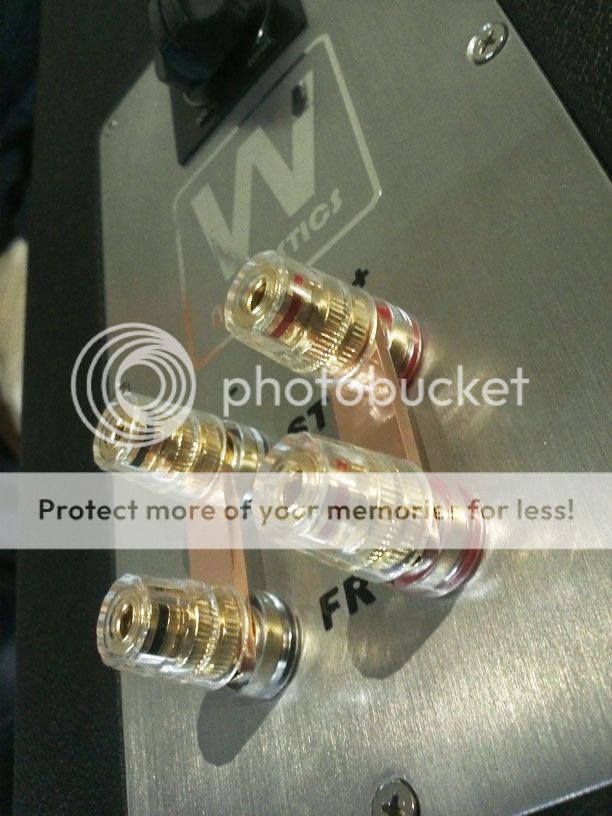
Hi,
It's been a while since i've finished my own full range tower, and I forgot to post it here. Here's my own version of the Markaudio Alpair 10P enclosure. I'm really enjoying it.





- Home
- Loudspeakers
- Full Range
- Full Range Speaker Photo Gallery


